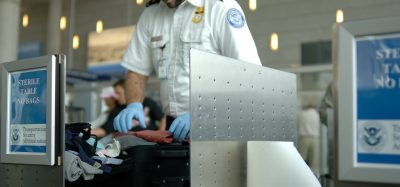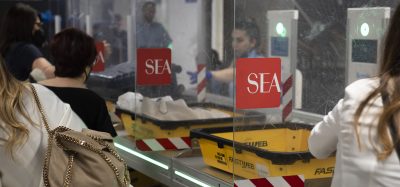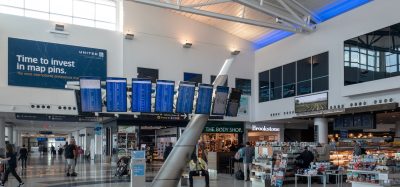A visibly strong force at the UK border: UK Border Agency – a year of achievement and strategic objectives
- Like
- Digg
- Del
- Tumblr
- VKontakte
- Buffer
- Love This
- Odnoklassniki
- Meneame
- Blogger
- Amazon
- Yahoo Mail
- Gmail
- AOL
- Newsvine
- HackerNews
- Evernote
- MySpace
- Mail.ru
- Viadeo
- Line
- Comments
- Yummly
- SMS
- Viber
- Telegram
- Subscribe
- Skype
- Facebook Messenger
- Kakao
- LiveJournal
- Yammer
- Edgar
- Fintel
- Mix
- Instapaper
- Copy Link
Posted: 26 May 2009 | Lin Homer, Chief Executive of the UK Border Agency and Brodie Clark, Head of the Border Force for the UK Border Agency | No comments yet
Immigration has been high on the political and media agenda for the last fifteen years. The government is committed to modernising and strengthening UK Border controls. On 1 April 2009 the UK Border Agency became a full executive agency of the Home Office. This follows a successful year as a shadow agency in which we brought together the work of the former Border and Immigration Agency, customs detection work at the border and UK visas, to establish a single and much stronger border agency.
Immigration has been high on the political and media agenda for the last fifteen years. The government is committed to modernising and strengthening UK Border controls. On 1 April 2009 the UK Border Agency became a full executive agency of the Home Office. This follows a successful year as a shadow agency in which we brought together the work of the former Border and Immigration Agency, customs detection work at the border and UK visas, to establish a single and much stronger border agency.
With a 25,000 strong workforce and a presence in 135 countries across the world, the launch of the UK Border Agency creates a new global organisation and one of the largest law enforcement agencies in the UK.
The UK Border Agency will strengthen the UK’s security through strong border controls, protecting the country from illegal immigration, organised crime and terrorism, while welcoming and facilitating legitimate travellers and trade. It will protect our border with single immigration and customs checks, tackle smuggling, immigration crime and border tax fraud, and it will implement fast and fair decisions.
We have set out our priorities until 2012 in our first business plan; new technology to detect more smuggled goods and a National Border Targeting Centre to sharpen security at ports are among the commitments for this year.
Protecting the UK from harm
As an agency we control the entry of people and goods to the UK, protecting the public from people or goods which can cause us harm and protecting tax revenues. We target those who present the highest risk and we seek to avoid inconveniencing legitimate trade and travel. From 1 April 2008 to 31 March 2009 we seized over £343 million worth of illegal drugs and in excess of 980 million cigarettes – representing a potential loss of £182 million in tax revenue.
We continue to roll out new detection scanners to help staff identify large consignments of drugs, cigarettes and other illegal goods in freight. The Freight Targeting System and the Automatic Number Plate Recognition (ANPR) capability are also transforming the way we detect those smuggling drugs and other illicit goods, allowing a real time risk assessment to be carried out allowing officers to target high risk goods.
Although smuggled weapons are not believed to be a primary source of illegal arms, we have had significant success in reducing the number of guns and knives coming into the country. In our first year we have prevented over 5,800 dangerous weapons, including firearms, stun guns and knives reaching the street. We will continue to focus attention on seizing firearms, readily convertible firearms, realistic imitation firearms and prohibited knives.
We have successfully installed equipment which routinely screens traffic entering the UK for the detection of radioactive and nuclear material at a number of sea ports and airports. This roll out across the border will continue throughout 2009.
We operate a fleet of patrol cutters to provide a maritime enforcement, surveillance and interdiction capability. These ships are deployed to detect prohibited and restricted goods, immigration crime and fiscal fraud through the investigation and searching of all types of vessels. They take part in maritime operations in both UK and international waters and are supported by a 24/7 shore based command and control team. The ships are shortly to undergo work to apply a new livery to mark their transfer from HM Revenue and Customs to the UK Border Agency.
Preventing illegal migration
Whilst migration brings a great many benefits to the UK, it needs to be controlled carefully. All employment-related tiers of the Points Based System are now in operation – helping us to respond flexibly to Britain’s economic needs. We are also introducing legislation to end the automatic right to stay in the UK, with newcomers having to earn their citizenship by speaking English, paying taxes and obeying the law. The agency has started issuing ID cards to foreign nationals, which acts as a shield against illegal immigration. We will be extending this scheme throughout 2009, and by 2011, all new applicants coming to the UK for more than six months, or extending their stay in the UK, will have to have an ID card.
We have continued our process of exporting the border. We have visa requirements in the right places, backed by fingerprint checks to verify identities against watchlists. This significantly enhances the UK Border Agency’s ability to monitor and intercept people of interest and it will give us the ability to authorise or deny entry to the UK before boarding. We also have in place a Risk and Liaison Overseas Network who provide training, support and advice to the air and maritime industries, to reduce the number of inadequately documented arrivals.
Since 2004 our juxtaposed controls in place in France and Belgium have dealt with the pressure of illegal migration. In 2008, UKBA officers working at those controls searched over one million freight vehicles, and prevented over 28,000 individual attempts to cross the channel illegally.
E-borders, our electronic borders system, will eventually count everybody into and out of Britain and allow us to identify criminals before they reach these shores. E-Borders has already screened over 82 million passengers travelling to Britain, leading to nearly 3,000 arrests, for crimes including murder, drug dealing and sex offences. As part of this programme to help manage the data we are opening the National Border Targeting Centre later this year. By the end of December 2009, we will capture 60% of passenger movements in and out of the UK, rising to 95% by the end of 2010.
We want those people who are in the UK illegally to leave voluntarily and, in co-operation with the International Organisation for Migration (IOM), we operate the Assisted Voluntary Return (AVR) scheme to that end. It provides a means of return that is both dignified and sustainable. For those who fail to leave voluntarily, enforced removal is a necessary part of our work. In 2008 over 66,000 people (including dependents) were removed or departed voluntarily from the UK, an increase of 5% from 2007. We also removed over 5,000 foreign national prisoners in 2008 and will seek to remove all foreigners convicted of serious crimes at the end of their sentences. We will continue to work in partnership with the National Offender Management Service (NOMS) to increase the number of Foreign National Prisoners (FNPs) we remove at the end of their sentences. We will start the consideration of deportation 12 months before the expected date of release, where sentence allows and where physically possible.
A single and strong force at the border
Following the introduction last year of our single border force, new combined customs and immigration controls have been established at five flagship sites: Gatwick, Harwich, Edinburgh, Coquelles and Teesport. We extended this integration during the year by training more than 3,000 of our border officers to provide a single people and goods service.
We will continue to build on this success in the coming year by extending our integration across all ports. In particular we plan to develop two ‘ports of the future’ which we will use to model and test a wider range of new initiatives. The project will identify key areas where Border Force activity on goods and passengers can be improved, using the latest technology and methods of working.
A single uniform for UK Border Agency staff working at the front line across the country is a priority – showing a visible change to the public face of the UK Border Agency. The uniform began roll out in early April 2009 and will be complete by the end of June 2009.
We are continually seeking ways of improving the service that we provide to our customers. We have introduced a number of initiatives, designed to improve the customer experience at the border. These include producing an in-flight DVD which is available to be shown to passengers on their way to the UK; an ‘infomercial’ for use in the arrival halls (to be used initially at four airports from December 2008); and, testing the use of touch screen technology at four other locations, to capture passenger feedback to inform our future operations.
Strong border controls should not be at the expense of legitimate travellers. Businesses and government should do what they can to make sure that the disruption caused by intercepting those who represent a higher risk is minimised. Investment in new automated clearance technology is already speeding the passage of legitimate travellers through the controls. The first facial recognition gates were installed at Manchester Airport in August 2008 and Stansted in December 2008. Nearly 200,000 travellers have already used this convenient, secure, self service border crossing.
Most of the feedback during the Automated Clearance Service (ACS) trials conducted in Manchester Airport and Stansted Airport has been positive – passengers have swiftly by-passed the queue for the conventional passport control. During the next year the UK Border Agency will be rolling out this technology to a further 10 UK ports. We will be using it in different environments and with different suppliers to further test its suitability for the future.
Working with our partners
Our relationship with partners and stakeholders is crucial to delivering an excellent service that meets the public’s needs. They regularly contribute a wealth of expertise and information by stimulating debate and significantly contributing to developing policy, from initiation right through to its implementation.
The role of the police as a delivery partner at the border remains high on our operational priorities and border strengthening agenda. Feedback from aviation and other key stakeholders is vital to us in developing our operations for the future and removing barriers to working collaboratively. We are setting out a new deal with Port Operators through the introduction of Service Level Agreements (SLAs). These agreements demonstrate our commitment to work with these stakeholders and put customer experience at the heart of what we do. We have agreed SLAs at 45 locations to date and are seeing real benefits, including shorter queuing times for passengers and better value for money, through to improved use of existing space and resources.
Looking towards the future
As we look towards the future, many challenges lie ahead and we look forward to working collaboratively with our partners and stakeholders in order to achieve our goals. Our contribution to the successful delivery of the Olympic and Paralympic games stands out as a key opportunity to showcase our ability to work together, at a time when the world’s eyes will be on the UK Stage. Considering the competent handling of the recent high profile G20 summit, we are more than confident that this can and will be achieved.
















